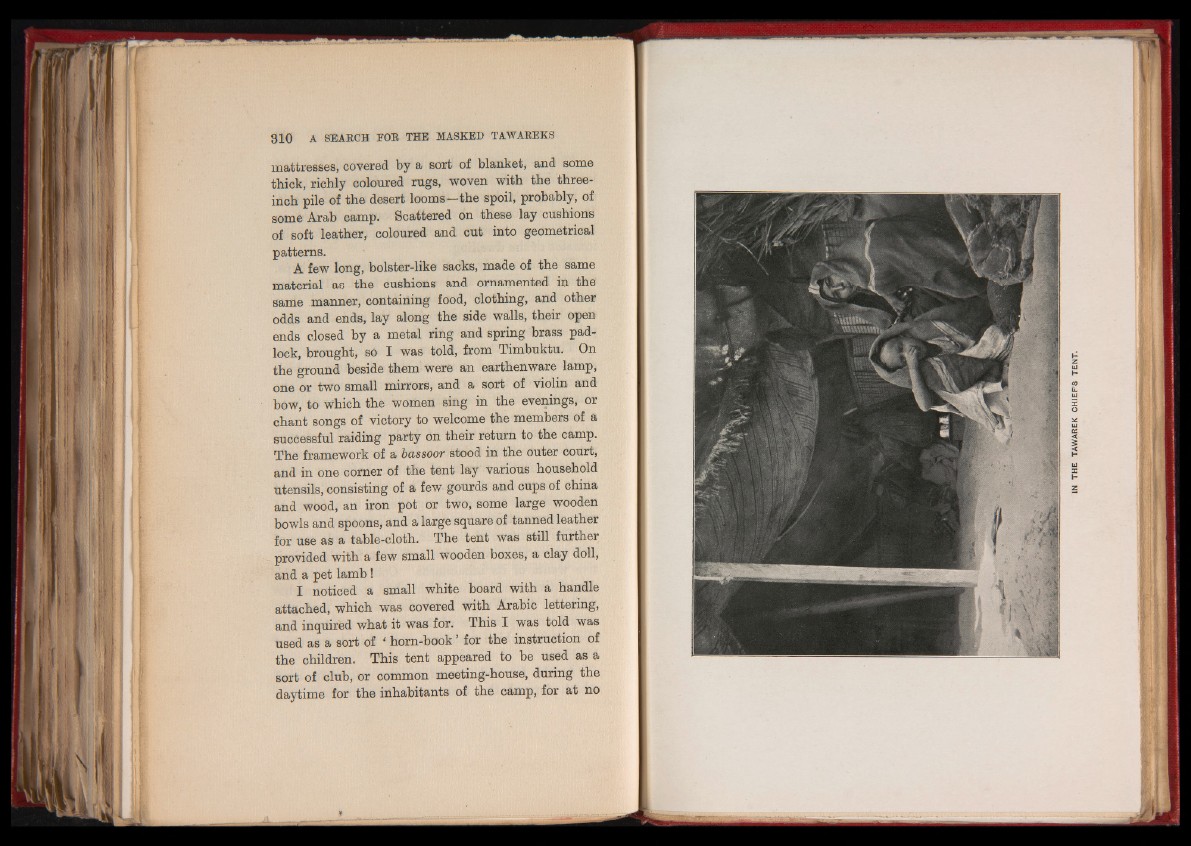
mattresses, covered by a sort of blanket, and some
thick, richly coloured rugs, woven with the three-
inch pile of the desert looms—the spoil, probably, of
some Arab camp. Scattered on these lay cushions
of soft leather, coloured and cut into geometrical
patterns.
A few long, bolster-like sacks, made of the same
material as the cushions and ornamented in the
same manner, containing food, clothing, and other
odds and ends, lay along the side walls, their open
ends closed by a metal ring and spring brass padlock,
brought, so X was told, from Timbuktu. On
the ground beside them were an earthenware lamp,
one or two small mirrors, and a sort of violin and
bow, to which the women sing in the evenings, or
chant songs of victory to welcome the members of a
successful raiding party on their return to the camp.
The framework of a bassoor stood in the outer court,
and in one comer of the tent lay various household
utensils, consisting of a few gourds and cups of china
and wood, an iron pot or two, some large wooden
bowls and spoons, and a large square of tanned leather
for use as a table-cloth. The tent was still further
provided with a few small wooden boxes, a clay doll,
and a pet lamb !
I noticed a small white board with a handle
attached, which was covered with Arabic lettering,
and inquired what it was for. This I was told was
used as a sort of ‘ horn-book ’ for the instruction of
the children. This tent appeared to be used as a
sort of club, or common meeting-house, during the
daytime for the inhabitants of the camp, for at no
IN THE TAWAREK CHIEF’S TENT.